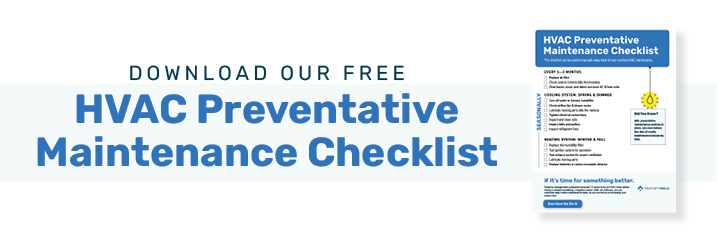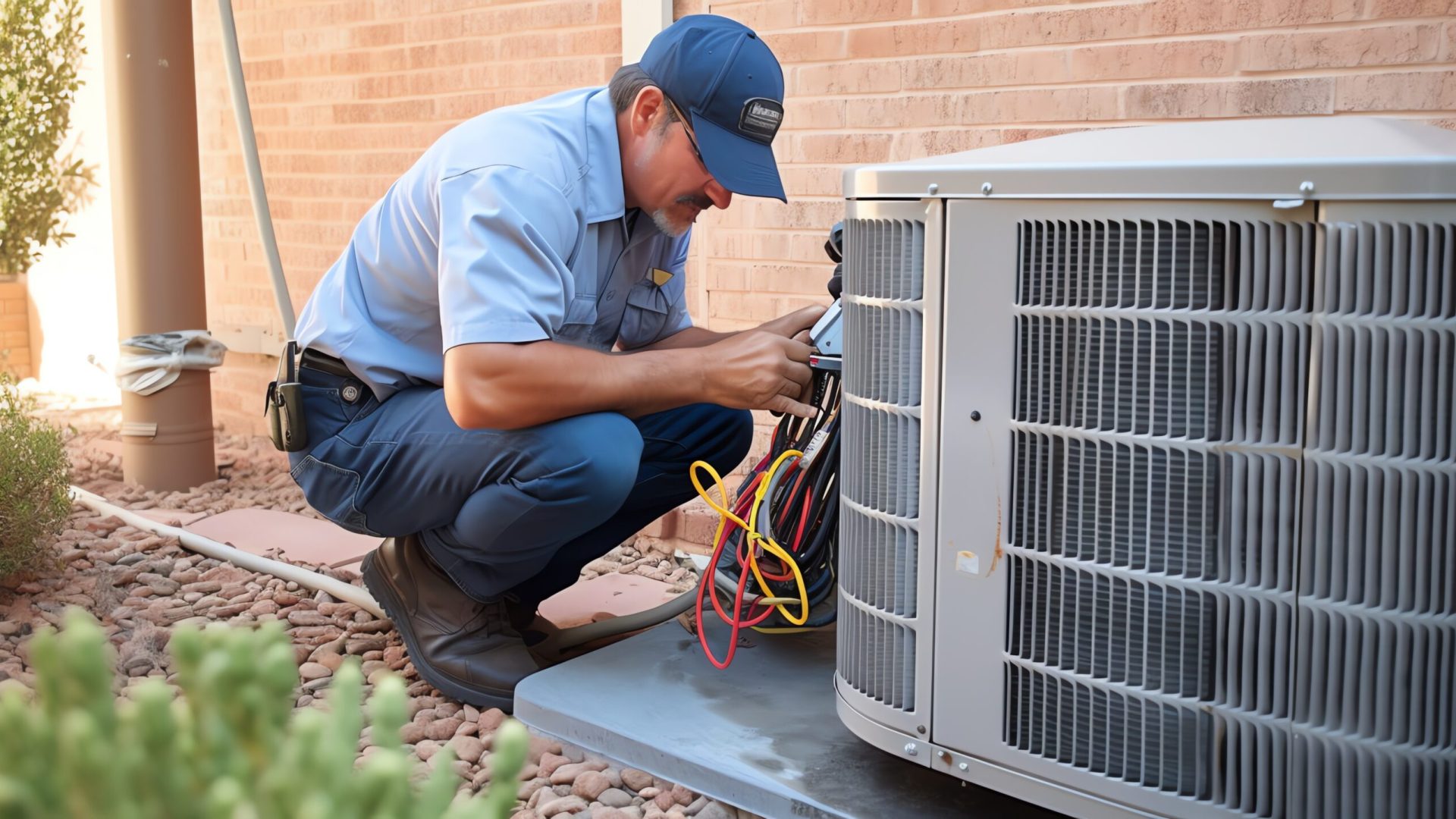The extreme swings of cold, heat, and humidity can cause stress to heat and cooling equipment. Preventative maintenance on your HVAC systems is often held off for the summer months when residents turn off their A/C unit for the winter. However, there is a better way to protect your investment in equipment. In this guide, we will cover everything related to HVAC preventative maintenance: when to perform preventive maintenance and ten steps to prolong the life of your HVAC equipment.
What is HVAC Preventative Maintenance?
HVAC, which means “heating, ventilation, and air conditioning,” is the system that keeps your home and rental units at optimal temperatures. It keeps your home warm in the brutal winters and cools in the sweltering summer months. HVAC preventative maintenance is cleaning and assessing the system’s components to ensure it is operating correctly to avoid future problems. One example is not changing HVAC filters or coils regularly, which can lead to leaks — wreaking havoc on your HVAC system.
Implementing preventative maintenance on your HVAC systems is crucial to avoid costly HVAC failures down the road.
Why is HVAC Preventative Maintenance Essential?
Improves the overall health of the home
Consider your HVAC equipment as the main artery that keeps the heart of a home beating. When the cooling and heating system operates efficiently, the entire home benefits. Alternatively, poor equipment can result in increased negative impacts.
For example, if your heater isn’t running correctly in cold temperatures, you risk other major, costly home issues. So why can’t you turn it off once in a while to prolong its life? There is a high chance that when you turn off your heater, the temperature can dramatically drop and ultimately freeze your pipes.
How is that possible? According to Mid Atlantic HVAC, the frozen water in the pipes can expand, burst, and even flood the home. Water damage will cost you more than paying the heating bill.
With preventative maintenance routines in place, it is said to reduce the risk of costly maintenance issues by 95%. Imagine being able to tell your property owner that you’re extending the life of their assets while saving them money.
Improves owner satisfaction and retention
Speaking of property owners, keeping their property in optimal shape is essential to owner satisfaction and retention.
Your owner’s property is an investment, and they trust you to ensure that their investment is maintained. Save thousands of dollars lost in HVAC repairs and avoid owner churn by spending a little time and money to do routine inspections.
Improves resident satisfaction and happiness
It’s no secret that a smooth-running HVAC system keeps your residents happy. Our data shows that satisfaction ratings and maintenance issues are inversely related; when problems arise, ratings drop, and when issues drop, ratings rise.
The length of time you have to repair an HVAC issue before a resident becomes disgruntled — and leaving a negative review — is shorter than with any other common maintenance issue.
Our data shows that property management companies have just 72 hours to fix an HVAC issue. If it takes any longer to repair, the chances of a resident writing a negative review skyrocket. Regular preventative maintenance ensures that everything will run smoothly, reducing the chance of resident churn and negative reviews.
Decrease cost of repair in high demand seasons
If you want to keep your maintenance costs down, your best bet is to avoid emergency repairs in high-demand seasons. When there is high demand for a vendor or technician, the price of their work will likely increase as well.
In addition, if a priority maintenance issue occurs, you have little choice but to hire a technician regardless of the timing or price. Implementing regular check-ups for your equipment will save you hundreds and thousands from emergency repairs during peak seasons.
Less stress on internal staff
Many businesses are experiencing a lack of inadequate staffing levels. The last thing your property management company needs is a flood of residents calling simultaneously about their AC unit breaking down. By simply taking preventative measures with regular inspections, your staff can put their efforts and time towards tasks that profit your company.
HVAC Issues By Season and Region
HVAC issues by season
When you think of the worst time for HVAC repairs, you probably imagine a sweltering early June day when thousands of air conditioners kick on for the first time of the year.
However, according to our data, the most expensive month for maintenance repairs is September. The average HVAC repair invoice is $435 — 21% higher than the average repair cost.
The second most expensive month is February, where the average invoice is $416 — 15% higher than the average cost.
That sweltering June day? It comes in at third, with an average invoice equaling $407.
HVAC issues by region
In addition to seasonal issues, each region is unique and can experience different fluctuations in repair costs depending on HVAC vendor demand.
Southern United States: 50% of all HVAC service issues in the south happen during the summer. In addition, the monthly repair request invoice is 123% higher than off-season invoices!
Northern United States: The monthly average repair request invoice is 61% higher than an off-season invoice during the winter months.
HVAC Preventative Maintenance Tips and Checklist
Preventative programs emphasizing routine inspections are a great place to start. When you create a system of regular check-ups for your property and assets, you’re able to identify problems before they become costly emergencies.
HVAC Preventative Maintenance Tips:
-
- Perform spring cleaning: We recommend cleaning the HVAC system’s air condensers and filters. This work will come at a cost to your company. Still, it will avoid expensive emergency repairs during the peak season.
- Consider charging an administration fee for preventive maintenance: It is reasonable and fair to charge an annual administration fee for HVAC preventative maintenance. The additional revenue will come in handy to invest in replacing new units down the road.
- Perform an inspection during a resident turnover. Another tip is to integrate HVAC inspections into your resident turnover program.
We made it easier for you to track these repairs with our editable HVAC preventative maintenance checklist.

Are you ready to take your property maintenance process to the next level? With our automation features, planning and scheduling preventative maintenance is a breeze. Request a demo today to learn more about how automation can enhance your daily preventive tasks.
Subscribe to The Maintenance Minute
Join our weekly newsletter where we will share industry insights and maintenance tips derived from our software’s clean data.






